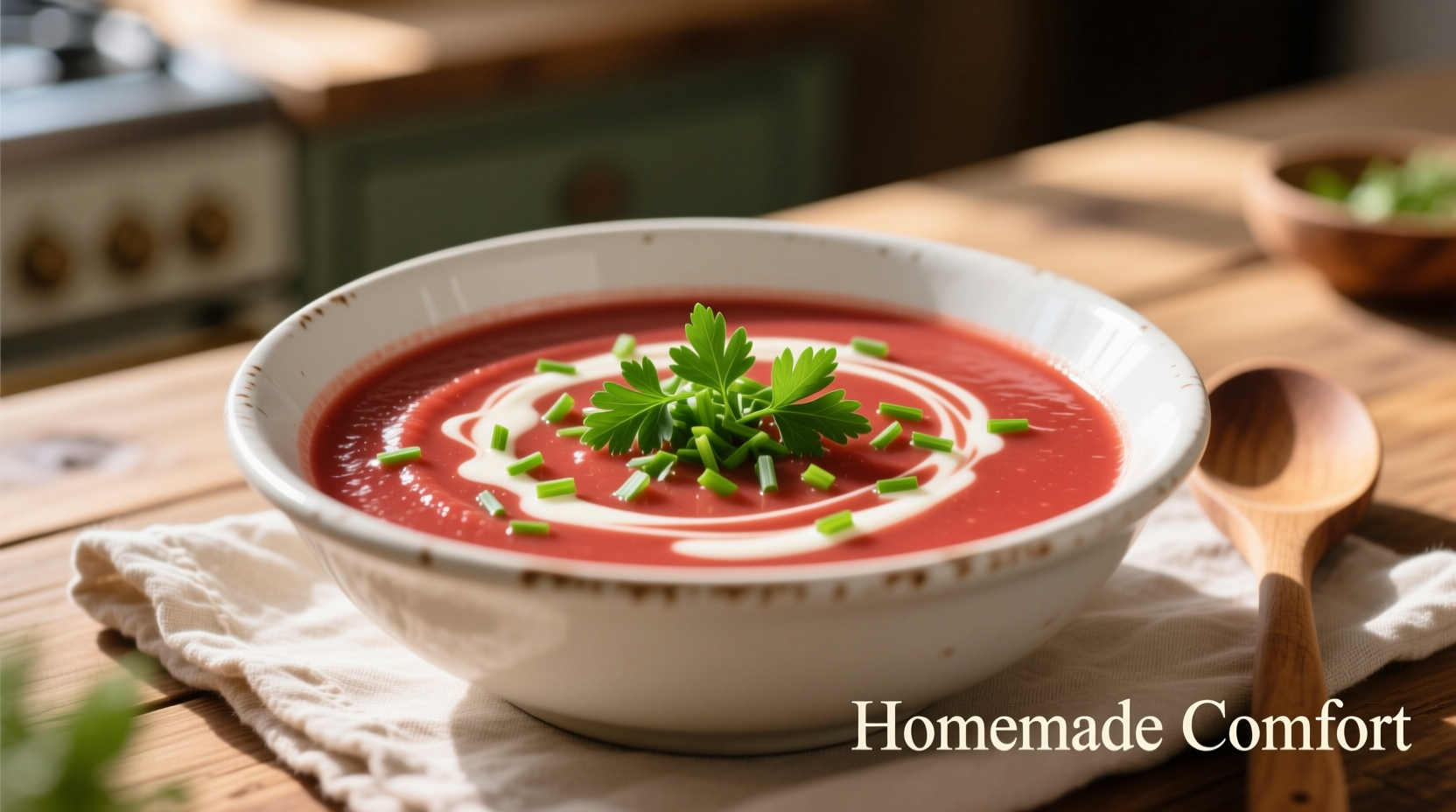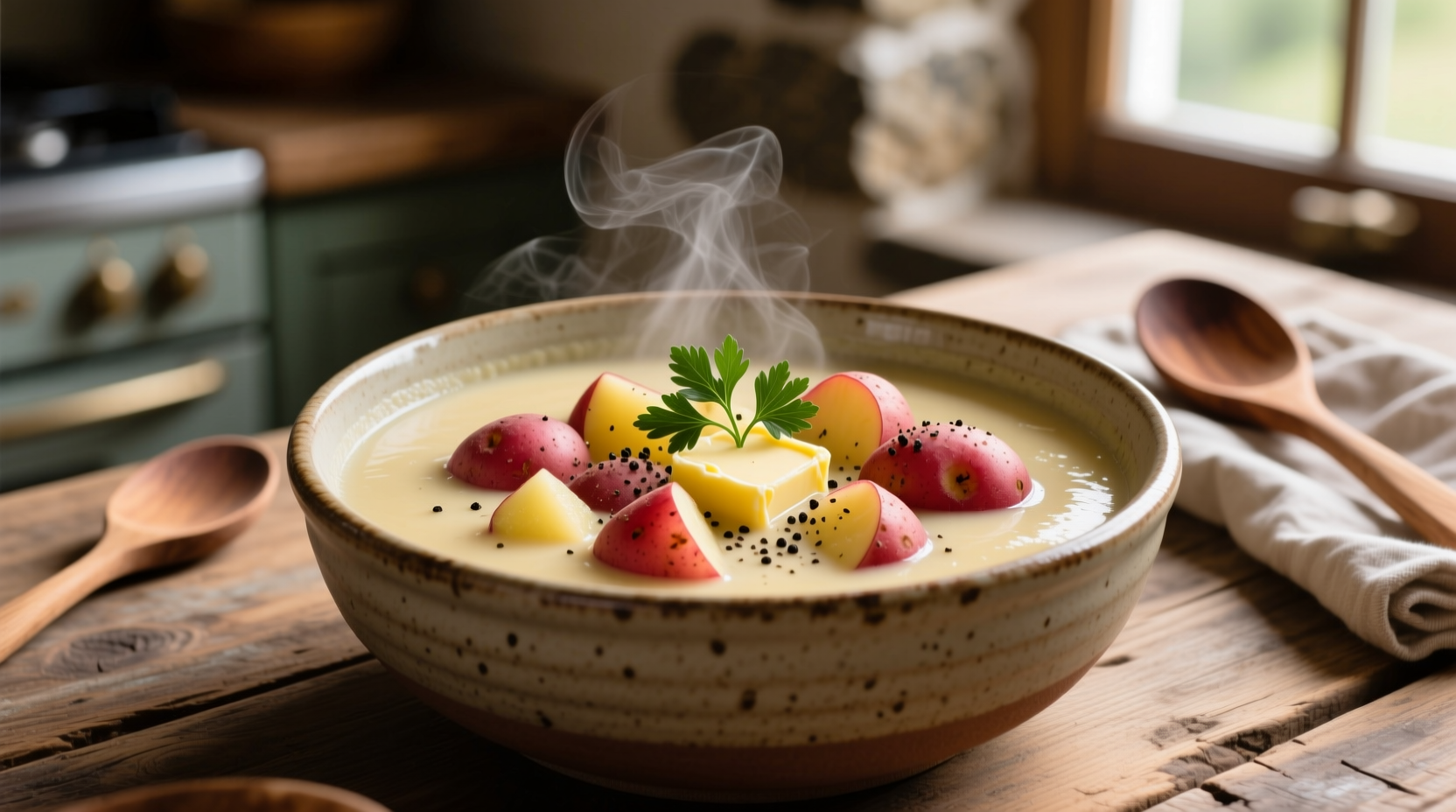Creating exceptional potato soup starts with understanding why red potatoes outperform other varieties. Unlike starchy russets that disintegrate during cooking, red potatoes maintain their structure while releasing just enough starch to naturally thicken your soup. Their thin, nutrient-rich skins contain valuable fiber and potassium, eliminating the need for peeling while adding visual appeal.

Why Red Potatoes Excel in Soup
Red potatoes contain 16-18% starch compared to russets' 20-22%, according to USDA agricultural research. This lower starch content prevents the potatoes from breaking down during simmering, maintaining desirable texture while still contributing to the soup's body. Their naturally higher moisture content (79% vs. russets' 75%) creates a creamier mouthfeel without requiring excessive dairy.
| Potato Variety | Starch Content | Soup Texture Result | Best Soup Applications |
|---|---|---|---|
| Red Potatoes | 16-18% | Creamy yet defined chunks | Chunky soups, rustic preparations |
| Russet Potatoes | 20-22% | Breaks down completely | Pureed soups requiring thickening |
| Yukon Gold | 17-19% | Naturally buttery creaminess | Balanced texture soups |
Essential Ingredients Checklist
Gather these soup-making essentials before beginning. Quality ingredients make the difference between ordinary and extraordinary potato soup:
- 2 pounds red potatoes (about 4 medium), scrubbed and diced into 1/2-inch cubes
- 4 cups low-sodium vegetable broth (homemade preferred for best flavor)
- 1 cup whole milk or half-and-half (for creaminess without heaviness)
- 1 large yellow onion, finely chopped
- 3 cloves garlic, minced
- 3 tablespoons unsalted butter (or olive oil for dairy-free)
- 2 sprigs fresh thyme (or 1 teaspoon dried)
- Salt and freshly ground black pepper to taste
Professional Technique: Building Flavor Layers
The secret to restaurant-quality potato soup lies in proper flavor development. Follow these chef-recommended steps:
- Sweat aromatics slowly: Cook onions in butter over medium-low heat for 8-10 minutes until translucent but not browned. This builds sweetness without bitterness.
- Add garlic last: Introduce minced garlic during the final 2 minutes of onion cooking to prevent burning.
- Toast spices: Add thyme and a pinch of nutmeg to the aromatics for 30 seconds to release essential oils.
- Add potatoes gradually: Incorporate potatoes in two batches, allowing each addition to develop light caramelization before adding more liquid.
- Simmer gently: Maintain a bare simmer (180-190°F) rather than boiling to prevent potatoes from breaking apart.
Avoid These Common Potato Soup Mistakes
Even experienced cooks make these critical errors when preparing potato soup with red potatoes:
- Overcooking potatoes: Red potatoes become waterlogged beyond 25 minutes of simmering. Test for doneness at 20 minutes.
- Adding cold dairy to hot soup: Temper milk by gradually mixing in 1/2 cup hot broth before adding to prevent curdling.
- Using pre-cut potatoes: Exposure to air degrades texture and flavor. Always use whole, freshly cut potatoes.
- Skipping acid balance: Finish with 1 teaspoon lemon juice or apple cider vinegar to brighten flavors.
Serving Suggestions and Variations
Elevate your potato soup presentation with these professional touches:
- Texture contrast: Top with crispy bacon bits, chives, and a dollop of sour cream
- Flavor boost: Stir in 1/4 cup grated sharp cheddar during the last 5 minutes of cooking
- Dietary adaptations: For dairy-free version, substitute coconut milk and use olive oil instead of butter
- Seasonal twist: Add roasted garlic in winter or fresh dill in summer for distinctive flavor profiles
Storage and Reheating Guidelines
Proper storage maintains texture and flavor for up to 4 days. Follow these food safety protocols:
- Cool soup completely within 2 hours of cooking
- Store in airtight containers with 1-inch headspace for expansion
- Reheat gently over medium-low heat, adding splashes of broth if too thick
- Do not freeze potato soup as the potatoes become grainy upon thawing











 浙公网安备
33010002000092号
浙公网安备
33010002000092号 浙B2-20120091-4
浙B2-20120091-4